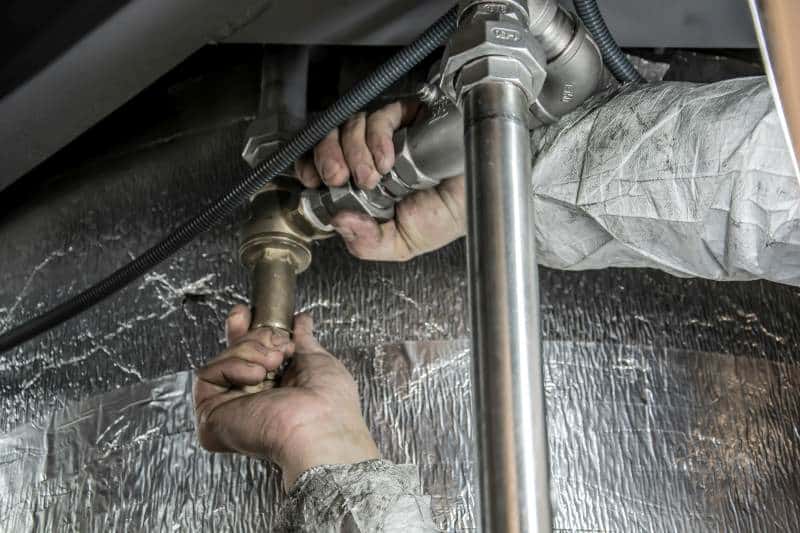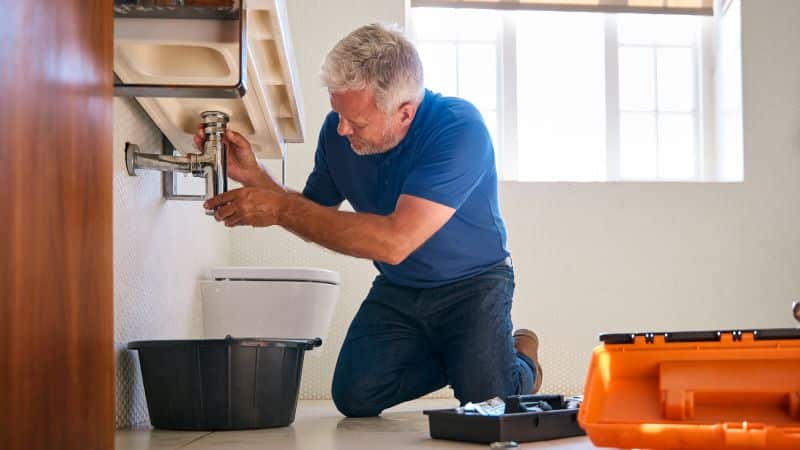Plumbing problems at home can be stressful and often seem urgent. Before panic sets in, it’s helpful to know which plumbing issues you can fix yourself and when calling a plumbing professional is the best choice.
Doing small repairs on your own can save money and time, but some situations require expert help to avoid bigger damage. This guide will walk you through common plumbing tasks you can try and clear signs that it’s safer to get a pro involved.
Fixing a Leaky Faucet
A dripping faucet is one of the most common plumbing annoyances. Often, the problem is a worn-out washer or seal that you can replace without much trouble. First, turn off the water supply to avoid flooding. Then, use basic tools to remove the faucet handle and check the washer.
Cleaning or swapping it out usually stops the drip. If the leak continues despite your efforts, it might be due to corrosion or damage inside the faucet. At this point, calling a plumbing professional is wise to avoid water waste or further damage.
Unclogging Drains
Slow or clogged drains can often be fixed using a plunger or drain snake. Avoid harsh chemicals, as they may harm your pipes. Begin by clearing any visible debris from the drain opening, then use a plunger to try and loosen the clog.
If that doesn’t work, a drain snake can reach deeper blockages. For bathroom sinks or tubs, hair and soap scum are common causes. Kitchen drains might clog from grease or food scraps. If you keep facing blockages, it’s a sign to call an expert before the problem worsens.
Fixing Running Toilets
A running toilet wastes water and raises your bill. Usually, the cause is a faulty flapper valve or fill valve inside the tank. You can inspect these parts and replace them easily. First, turn off the water supply and flush the toilet to empty the tank.
Check if the flapper seals tightly and adjust or replace it if necessary. Also, ensure the fill valve stops filling once the water reaches the right level. If the toilet keeps running after these steps, calling the best plumber may save you frustration and water waste.
Replacing Showerheads
Installing a new showerhead is a straightforward DIY job that can improve water flow and save water. Unscrew the old showerhead by hand or with a wrench, using a cloth to protect the finish. Clean the pipe threads before applying plumber’s tape.
Screw the new showerhead on securely but avoid overtightening. Test the water flow and adjust the angle. This simple upgrade can boost your shower experience and fix leaks from old fixtures. If leaks continue after installation, calling a professional is recommended.
Fixing Low Water Pressure
Low water pressure can result from clogged pipes, leaks, or faulty valves. Begin by checking if the problem affects all faucets or just one. Clean faucet aerators to remove mineral buildup. Check for leaks under sinks or around pipes.
Make sure the main water valve is fully open. Sometimes sediment buildup in pipes causes pressure issues. If your efforts don’t restore normal pressure, it might require advanced tools and skills.
Sealing Pipe Leaks
Small leaks in visible pipes can sometimes be sealed temporarily with waterproof tape or pipe sealant. These fixes can hold you over until you get professional help. Locate the leak, dry the pipe, and wrap the tape tightly around the affected area.
Avoid ignoring leaks because they cause water damage and mold growth. For permanent repairs, replacing the damaged pipe section is often necessary. When leaks are under sinks, inside walls, or ceilings, calling a plumbing professional is safer and more effective.
Maintaining Water Heaters
Water heaters need regular maintenance to function well and last longer. Draining the tank yearly helps remove sediment buildup. Check the pressure relief valve and thermostat settings for safety and efficiency. If you notice leaks or strange noises, turn off the heater and call a pro.
Attempting repairs without proper knowledge can be dangerous because of hot water and gas or electric components. Regular inspections by a professional plumber in Salt Lake City keep your water heater in good shape and prevent emergencies.
Repairing Garbage Disposals
Garbage disposals can jam or stop working, but most problems are easy to fix yourself. First, unplug the unit before working on it. Use an Allen wrench to turn the motor manually and free jams.
Avoid putting fibrous or hard items into the disposal. Reset the unit with the button usually found underneath. If the disposal hums but doesn’t grind, or leaks occur, calling a professional is the best option to avoid damage or injury.
Fixing Toilet Clogs
Toilet clogs are often fixed with a plunger or a toilet auger. Avoid flushing anything besides toilet paper to prevent clogs. Use a flange plunger to create a better seal around the drain.
If plunging fails, a toilet auger can reach deeper blockages. Persistent clogs might signal sewer line problems. In those cases, calling a professional plumber ensures proper inspection and repair without damaging your plumbing system.
Replacing Faucet Cartridges
Faucet cartridges control water flow and temperature. When your faucet leaks or won’t turn smoothly, replacing the cartridge can solve the problem. Turn off the water, remove the handle, and extract the cartridge.
Take the cartridge to a hardware store to find the correct replacement. Install the new cartridge carefully, making sure it fits properly. If the faucet still leaks or doesn’t work right, a professional’s help can prevent costly mistakes.
Fixing Sump Pump Issues
Sump pumps prevent basement flooding but need occasional checks and maintenance. Test the pump by pouring water into the sump pit to make sure it activates. Clean the pump and pit from debris regularly.
If the pump doesn’t turn on or runs continuously, it might need repairs or replacement. Electrical problems require careful handling. When you’re unsure or see persistent problems, calling a plumbing professional is the safest choice.
Know When to Call a Professional Plumber
DIY plumbing can handle many common issues and save money when done right. Simple tasks like unclogging drains, replacing showerheads, or fixing leaky faucets are great starting points. However, some plumbing problems need professional tools and expertise to avoid damage and ensure safety.
Knowing when calling a plumbing professional is necessary keeps your home’s plumbing in top condition. Don’t hesitate to seek help when needed — it’s the smart way to protect your home and avoid bigger headaches later.


